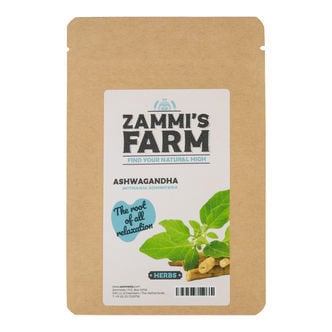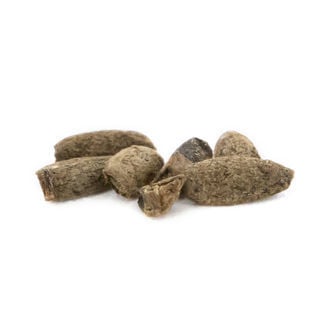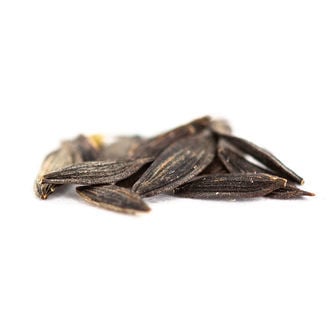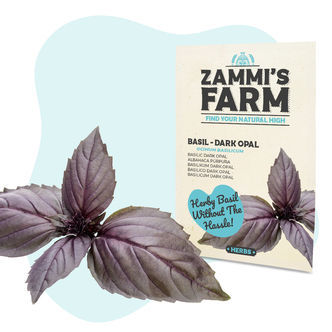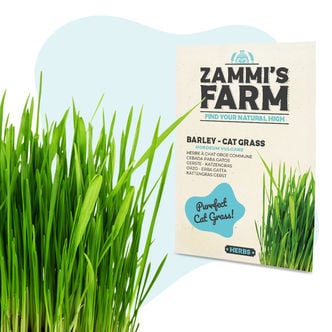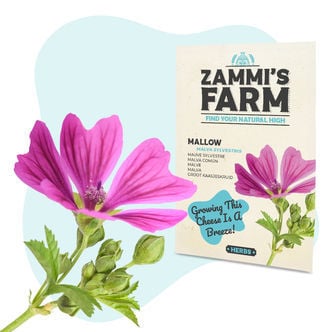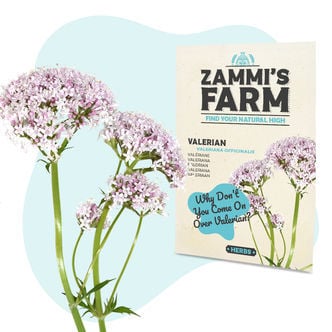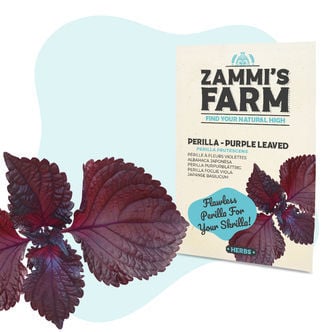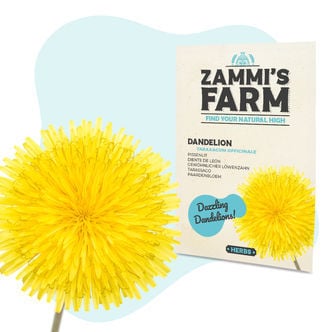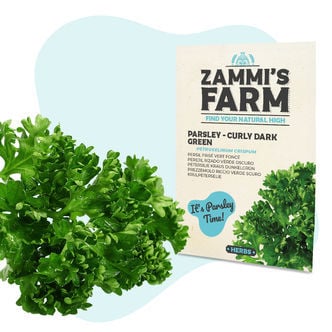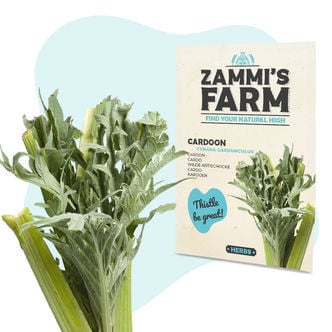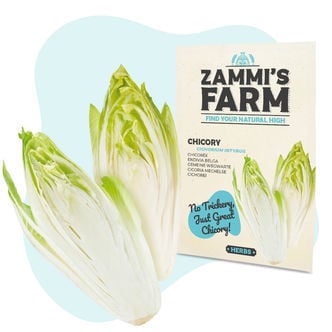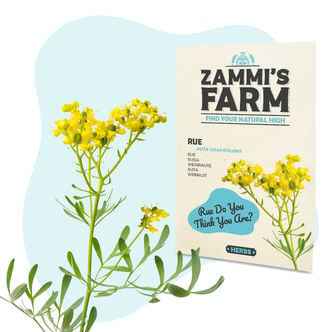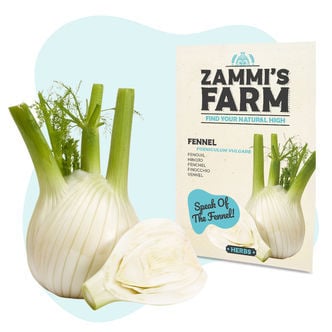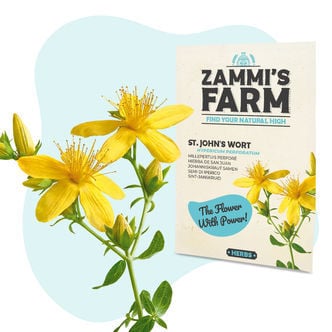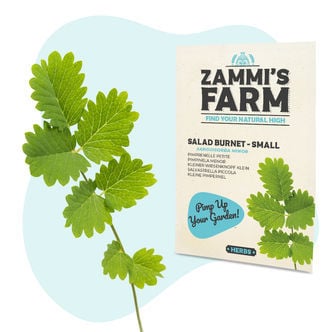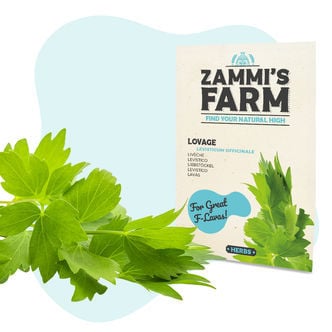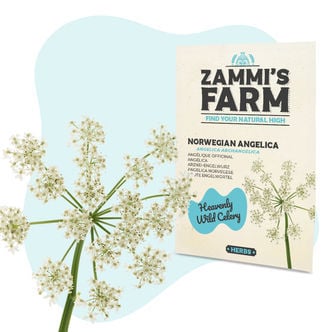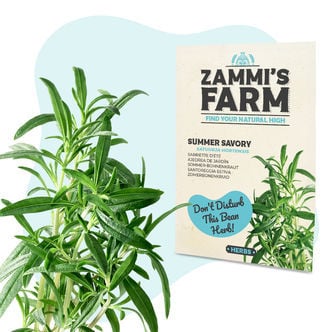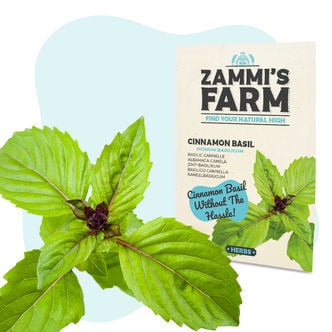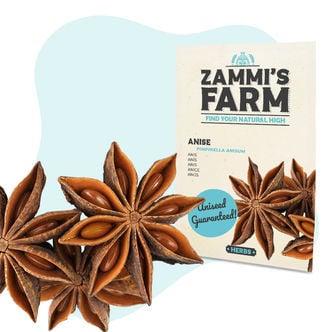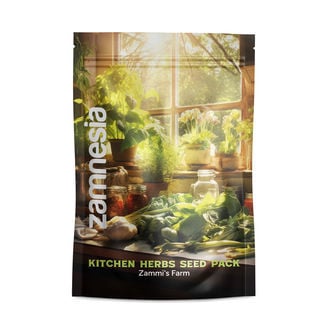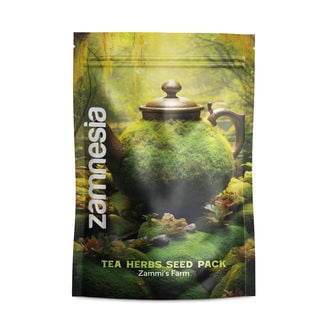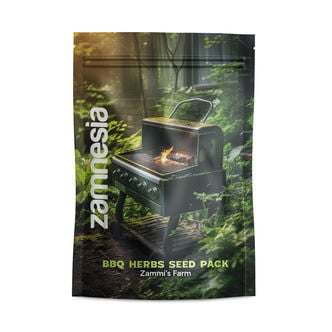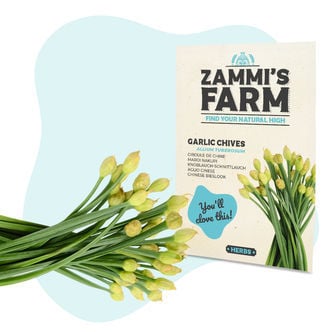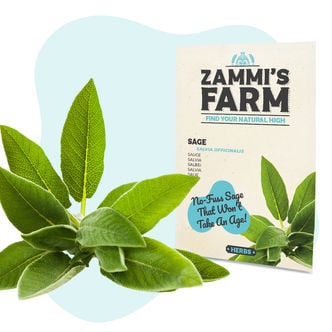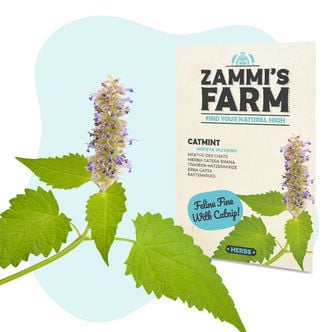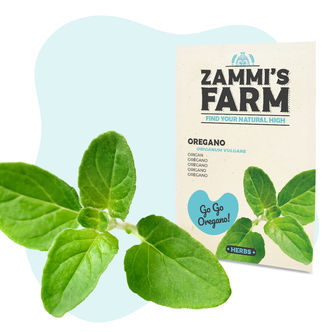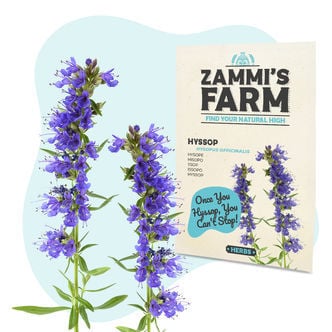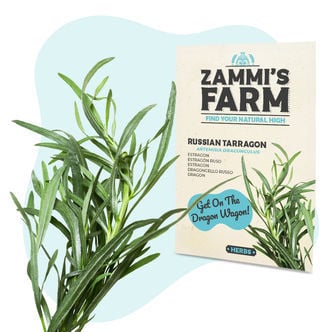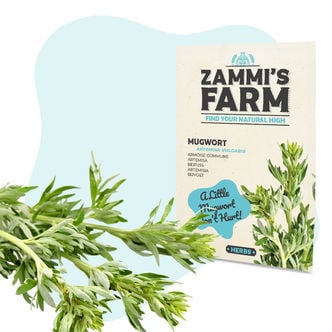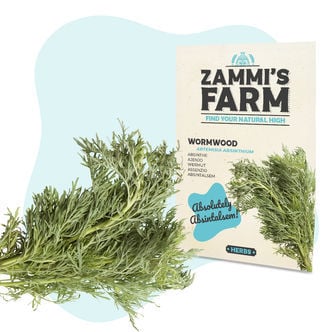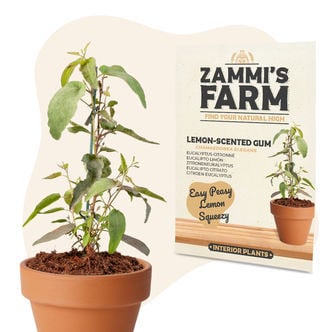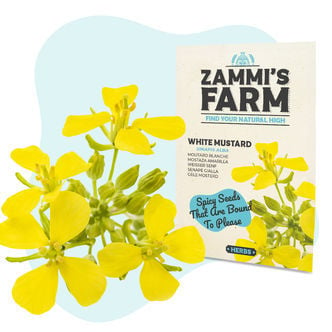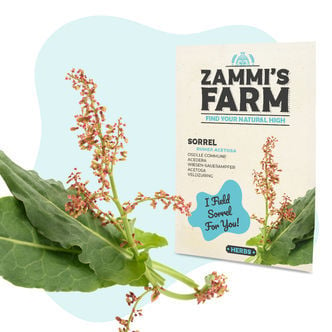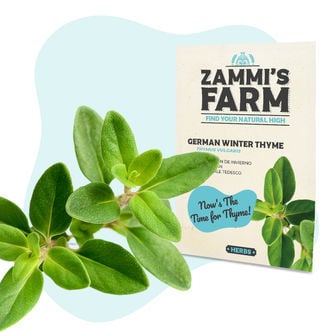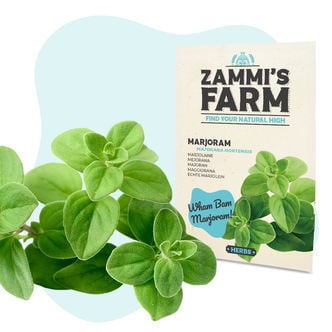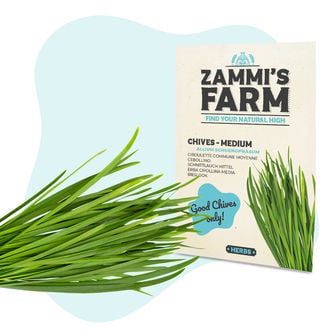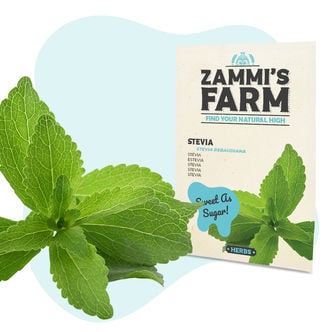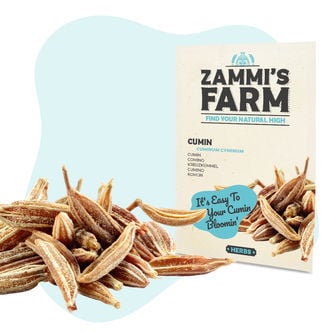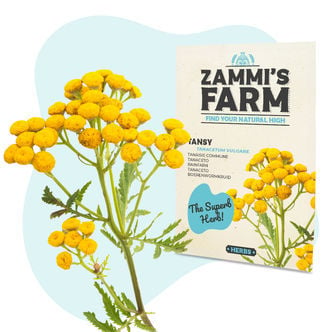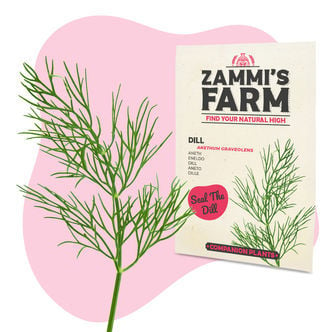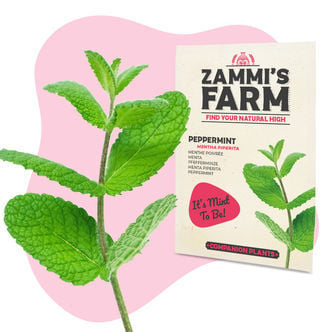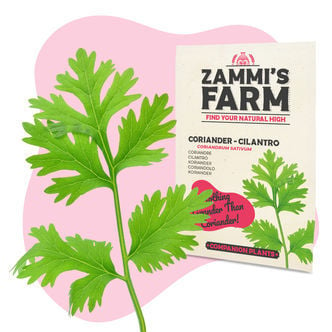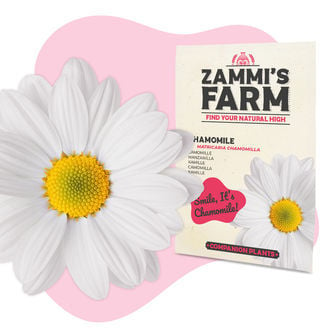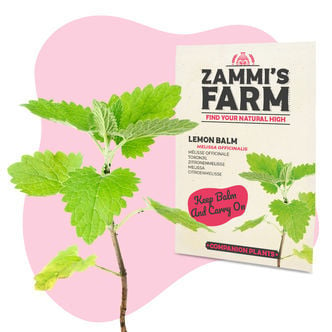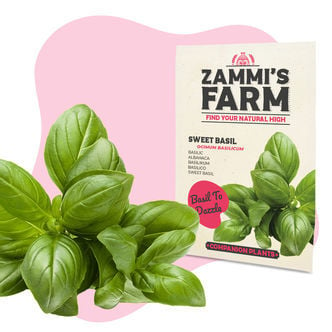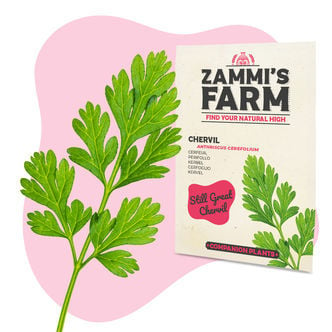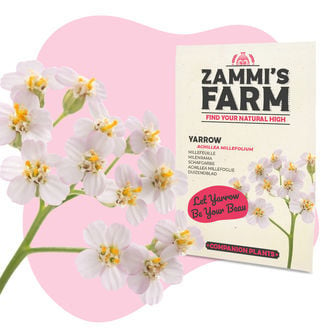Herb Seeds
There are 50 products.Want to cultivate aromatic, flavourful, and colourful plants from the comfort of your home? Here at Zamnesia, we've got you covered with our massive selection of herb seeds. This huge range of herbaceous plants is geared toward growers of all levels of expertise. So if you're a beginner with a small balcony space, you'll find a receptive and accessible seed that's primed to flourish, no matter where you place it.
You definitely don't need acres of land and a wealth of farming knowledge to grow herbs. These seeds are fast to flourish and will be ready to add to your favourite dishes, salads, and smoothies in no time at all! While you can visit your local store and pick up fresh and dried herbs, you're only doing yourself and your food a disservice. Dazzle your palate with homegrown herbs that won't let you down.
Ashwagandha (Withania somnifera) Seeds
Ashwagandha (Withania somnifera) is a shrub native to India, and it has been used for many years in the Ayurvedic tradition. Attractive and easy to cultivate, why not try growing it in your very own garden?
Klip Dagga (Leonotis nepetifolia) Seeds
Native to Africa and Southern India, klip dagga is a colourful plant with a unique appearance. Fortunately, it's also pretty simple to grow. Sow the seeds indoors at the end of April in moist soil, and keep the same conditions until they germinate. Then, move them outside so they can flourish. Provide them with plenty of light and warmth, and harvest leaves and flowers when ready.
Wild Lettuce (Lactuca virosa) Seeds
Wild lettuce (Lactuca virosa) thrives in cool and cold conditions and produces edible leaves throughout most of the year, even into winter. Plus, it's full of nutrients. Get growing!
Basil 'Dark Opal' (Ocimum basilicum) Seeds
Like normal basil, Dark Opal basil is best sown indoors. Keep your seedlings on a warm windowsill as they develop their roots and first leaves, then bring them outside in mid/late spring. Like most herbs, basil likes well-draining soil and partial shade/full sun, and is best watered sparingly (in the morning to give the roots time to dry). Use in a variety of cuisines and as a natural insecticide.
Barley - Cat Grass (Hordeum vulgare) Seeds
Barley - Cat Grass (Hordeum vulgare) Seeds are, as the name suggests, purrfect for your cat. It works as a digestive aid for them and may also prevent hairballs! The plant is effortless to grow and care for and can be sown between the months of April and September. Pick a light spot for them to flourish in, but ensure it doesn't get too much direct sunlight. This is one fast plant to grow!
Mallow (Malva sylvestris) Seeds
The mallow, or Malva sylvestris as it's otherwise known, is a plant that's commonly found in the warmer climes of Iran and North Africa. However, now you can grow this colourful companion at home. Sow these seeds in April, and you'll see that come September, you'll have some fully formed flowers at your disposal. Mallow is a particular favourite for use in soups.
Valerian (Valeriana officinalis) Seeds
Valerian is a hardy plant that thrives in full sun and half-shade in almost all soils. Plant in an outdoor seedbed around April-May, prick out once in June, before transplanting them in autumn to their final position in your garden. The extracted juices of valerian root can be used for making home concoctions, while its leaves make for great additions to salads.
Purple Perilla (Perilla frutescens) Seeds
Perilla, shiso, or deulkkae (Perilla frutescens) is an annual plant native to Southeast Asia and India, and is often used as a garnish for fish, rice, and tempura dishes. Perilla likes sunny or part-shade locations and deep, wide, well-draining plots of soil to accommodate its low, outward growth. Harvest mature perilla leaves and use them as an aromatic in your favorite dishes or infusions.
Dandelion (Taraxacum officinale) Seeds
Taraxacum officinale, aka the dandelion, is a herbaceous perennial plant that's perfect for all kinds of growing setups. Allow the beautiful yellow colour to brighten up your life. Sow in spring, and allow plants to flourish over the summer months. Provide well-draining soil and plenty of light and warmth, and you'll be rewarded with a plant boasting numerous culinary and herbal uses.
Parsley 'Curly Dark Green' (Petroselinum crispum) Seeds
Unlike most herbs, Petroselinum crispum (parsley) likes fertile soil. Parsley plants can be started indoors in a propagator or on a warm, sunny windowsill. Alternatively, sow directly outdoors after the last frost. Parsley plants like full sun, regular watering, and occasional, balanced fertilisation. Harvest fresh leaves and stems to promote bushier growth, and use in the kitchen as you please.
Cardoon (Cynara cardunculus) Seeds
Cynara cardunculus (cardy, cardoon, or artichoke thistle) is a very hardy and somewhat invasive plant. It grows best in soil rich in organic matter (including dung and decomposing plant matter) and in locations with warm conditions and full sunlight. The spiked flowers can be eaten like artichokes, while the stalks are best protected from the sun (using dirt mounds) and served boiled or braised.
Chicory (Cichorium intybus) Seeds
Sow chicory seeds in spring, after the last frost, in a spot with at least 6hrs of direct sunlight. Take care not to bury the seeds deeper than 0.5cm beneath the soil. Seedlings will sprout after 2–3 weeks in moist (but not wet) soil and should be thinned to leave roughly 30cm between plants. Harvest fresh leaves and blanched buds to eat raw. Dried, ground chicory roots can substitute coffee.
Rue (Ruta graveolens) Seeds
Ruta graveolens, or simply rue, is very hardy and can tolerate poor soil fertility and droughts. Plant established rue specimens in full sun and water sparingly, especially in dense soils. Use mulch to insulate rue plants during winter, and cut back plants entirely to their old wood in spring to encourage new growth. While previously used in various cuisines, rue is best grown as an ornamental.
Fennel 'Fino' (Foeniculum vulgare) Seeds
With its unique flavour and aroma, fennel has been a prized vegetable since the days of ancient Greece. Sow in the early spring months, and let the plant flourish until late September before harvesting. Plenty of room is required, as fennel can reach heights of around 2m. Once ready to harvest, fennel root and fronds can be put to versatile use in the kitchen.
St. John's Wort (Hypericum perforatum) Seeds
Hypericum perforatum, or St. John's wort, is an easy-to-grow perennial with beautiful star-shaped flowers. It grows best in full sun or partial shade, and can tolerate loamy or sandy soils, drought, and even flooding. Plant outdoors from early to mid-summer, and propagate St. John's wort from seed, division, or by taking soft-wood cuttings. Harvested flowers have a long history of holistic use.
Salad Burnet (Sanguisorba minor) Seeds
Salad burnet thrives in well-draining soil and is a hardy and robust plant whose leaves will be ready to harvest in late summer. Provide ample light, warmth, and water, and it'll reach heights of around 60cm. A plant favoured by such figures as Francis Bacon and Thomas Jefferson, it has a flavour that's perfect for sauces, dressings, and even summer drinks.
Lovage (Levisticum officinale) Seeds
Lovage seeds are best germinated indoors during spring, then brought outside once they have developed 2 sets of leaves and the last frost has passed. Transplant seedlings into fertile, deep, well-draining soil in full sun. Where possible, keep the soil slightly acidic (roughly 6.5 pH) and partly sandy/loamy with plenty of organic matter. Cook lovage leaves/roots or eat them raw in salads.
Norwegian Angelica (Angelica archangelica) Seeds
Norwegian angelica is a plant that originates from the Scandinavian region of Northern Europe. Producing edible stems that are similar to celery, it has plenty of uses in cooking, and the roots can even be used in gin distillation. Norwegian angelica requires consistently moist soil to flourish. Plant in spring, and it'll be ready to harvest come autumn.
Summer Savory (Satureja hortensis)
Summer savory (Satureja hortensis) belongs to the mint family and is a close relative of thyme and rosemary. It grows well in light, loamy soil with good drainage and plenty of sunlight. Leaves can be harvested as soon as plants reach 12.5–15cm tall, and are best consumed before the plants flower for a sweeter flavour. Summer savory makes a great seasoning for dressings, sauces, stews, and pies.
Cinnamon Basil (Ocimum basilicum) Seeds
Otherwise known as Mexican spice basil, cinnamon basil has a flavour reminiscent of its namesake, and is perfect for use in both sweet and savoury dishes. However, before that, you'll need to grow it! Cinnamon basil requires full sun and well-draining soil to perform at its best. It can reach over 1m in height, so start plants inside in the spring and let them flourish outside in the summer.
Anise (Pimpinella anisum) Seeds
Anise is best sown in early–mid spring in a sunny but sheltered spot. Germination can take between 3–4 weeks, but may be sped up by soaking seeds in water for a few days prior to planting. Pimpinella anisum hates cold and wet conditions, and likes well-draining, slightly acidic soil. Anise seeds can be harvested in late summer/early autumn and used in a variety of sweet and savoury dishes.
Kitchen Herbs Seed Pack - Zammi's Farm
Have a selection of practical and tasty herbs at your disposal with the Kitchen Herbs Seed Pack from Zamnesia. This curated selection of high-quality herbs is perfect for adding to a variety of dishes, and for using as a garnish on your plate too. These herbs are effortless to grow and can be cultivated on a kitchen windowsill for convenient placement when the time comes to use them.
Tea Herbs Seed Pack - Zammi's Farm
This selection of seeds has everything you need to make high-quality herbal tea from home. These plants are easy to grow and maintain, and after just a short cultivation cycle, you'll have access to a variety of herbs you can brew into delicious teas. With a host of potential wellness benefits, this finely tuned and carefully curated selection of seeds shouldn't be missed.
BBQ Herbs Seed Pack - Zammi's Farm
Prepare for BBQ season in the best way possible by growing your very own selection of herbs and plants. Whether you're making side dishes or looking to create rubs, marinades, or sauces, nothing's better than using ingredients you've grown yourself. The BBQ Herbs Seed Pack contains everything you need to make not only the BBQ foods of your dreams, but many other dishes too.
Garlic Chives (Allium tuberosum) Seeds
Also referred to as Chinese chives and oriental garlic, garlic chives are a tasty herb with flavours reminiscent of its namesake. It's used in a wide variety of dishes, such as fish, salads, and soups. Before using them, though, you'll need to grow them! An easy affair, you can grow garlic chives both indoors and outdoors. Just give them moist soil and regular light, and watch them thrive.
Sage (Salvia officinalis) Seeds
Germinate sage in late fall/early spring in an indoor propagator. Bring seedlings outside after the last frost, once they've developed their first set of true leaves. Plant in pots or garden beds in a sunny spot with well-draining soil. Regularly cut back plants and harvest their fresh leaves (which have the best taste) to encourage new growth. Use sage in cooking or to make herbal teas.
Catmint (Nepeta mussinii) Seeds
Catmint/catnip is very hardy and can be sown directly outside in late spring. It likes slightly acidic, well-draining soil and full sun. Although it appreciates regular watering, established plants can deal with moderate dry spells. Besides being loved by cats, catmint attracts pollinators into the garden while repelling mosquitos and cockroaches. Catmint can also be brewed into a wholesome tea.
Oregano (Origanum vulgare) Seeds
Grow oregano in well-draining pots or planters in full sun. Oregano plants suffer in moist soil, so water them only when their soil has dried out, and plant them in a light soil mix. Shelter oregano plants during long wet spells, and harvest fresh leaves regularly to encourage new growth. Use liberally in Mediterranean and Latin American cuisine for an intense, earthy, and warm flavour.
Hyssop (Hyssopus officinalis) Seeds
Hyssop, or Hyssopus officinalis, is part of the mint family and traditionally found in southern Europe and the Middle East. This shrub is quick to grow and needs to be sown in moist soil under full sun in the early summer months of June onward. With harvests as early as August, the flowers and leaves of this plant have a range of culinary and holistic uses worth exploring.
Russian Tarragon (Artemisia dracunculus) Seeds
Tarragon (Artemisia dracunculus) has been cultivated for culinary purposes since at least 500 BCE. This hardy perennial plant likes growing in full sun and fertile, well-draining soil (though it can grow fine even in sandy/loamy soil). Germinate tarragon in spring, and space plants appropriately to accommodate their fast-growing roots. Ideal for adding to salads, marinades, condiments, and more.
Mugwort (Artemisa vulgaris) Seeds
Artemisa vulgaris likes warm, sunny spots with well-draining, dry soil. Mugwort is a hardy, drought-tolerant plant that grows well in slightly shaded areas and in both acidic and slightly alkaline soil. Mugwort seeds are best germinated in a propagator or outdoors in spring after the risk of frost passes. Fresh mugwort can be used to season stocks, broth, and game, and as a herbal tonic.
Wormwood (Artemisia absinthium) Seeds
Artemisia absinthium (wormwood) seeds are best germinated in a propagator in early spring, or in garden beds between mid-spring and early summer. Remember to thin out your crop and grow absinth in full sun and well-draining soil. Avoid overwatering; Artemisia absinthium has a high tolerance for drought. It can be used to flavour alcoholic beverages, control garden pests, and make herbal tonics.
Wellness Seed Pack - Zammi's Farm
This pack of wellness plant seeds allows you to grow traditional botanicals in your very own garden! With a variety of seeds, you can cultivate a selection of plants that you can use in a range of different situations. How good will it feel to head out to your garden and pick some leaves or flowers to use in your own holistic preparations? Well, you'll soon find out.
Lemon-Scented Gum (Eucalyptus citriodora) Seeds
Though native to Australia, you don't have to go down under to bask in the beauty of the Lemon-scented Gum Tree. These Eucalyptus citriodora seeds are super hardy and can be grown indoors all over the world all year round. Start your seeds off when it's warm and keep mature plants in full sun and enjoy their natural citronella aroma - great for keeping mosquitoes at bay.
White Mustard (Sinapis alba) Seeds
White mustard (Sinapis alba) is versatile. Use the seeds in cooking, sauce making and pickling, and the young leaves in salads and other dishes. The choice is entirely up to you. If you're looking to grow, sow the seeds in March, and they'll be ready in the summer. Generally low maintenance, all it takes is just some moist soil and the standard light and warmth, and you'll be golden.
Sorrel (Rumex acetosa) Seeds
Sow sorrel (Rumex acetosa) seeds in light, warm soil in spring (after the last frost). Common garden sorrel likes damp soil, so water regularly while being diligent not to flood the plant's roots. Trim sorrel plants regularly during the growing season to encourage healthy, bushy growth. Sorrel can be eaten fresh in salads or cooked and puréed to make sauces, soups, or Asian curries/stews.
German Winter Thyme (Thymus vulgaris) Seeds
A perennial plant originating from the Mediterranean, German winter thyme, also known as Thymus vulgaris, requires full sun to really flourish. This is a bushy plant that can become a mainstay in your garden for many years under the proper care. Planting in loamy, well-draining soil is the key to success here. Once ready, the herb is ideal for culinary use in a similar way to oregano and sage.
Marjoram (Majorana hortensis) Seeds
Majorana hortensis, or sweet marjoram, loves sunlight just as much as oregano, its closely related cousin. Start marjoram seeds in a propagator or directly outdoors in spring (after the last frost). Marjoram also likes loose, well-draining, and moist soil, though established plants are fairly drought-tolerant. Marjoram is a great seasoning for pork, poultry, and a variety of vegetables.
Chives 'Medium Fine' (Allium schoenoprasum)
Chives are best started indoors and brought outside in spring after the last frost, once they are about 4" (10cm) tall. They thrive in half-shade and like fertile, well-draining soil with plenty of organic matter. Make sure to keep the soil moist (especially during long dry spells in summer) and harvest fresh leaves regularly to encourage new growth. Ideal for seasoning various savoury dishes.
Stevia (Stevia rebaudiana) Seeds
Stevia rebaudiana or sugarleaf is very easy to grow. Germinate seeds indoors and bring them outside in mid-summer. Plant stevia in full sun in well-draining soil with a pH of 6.7-7.2. Feed plants regularly with a natural liquid fertilizer or nitrogen-rich organic fertilizers like compost, worm castings, guano, or something similar to fuel healthy leaf growth. Use stevia as a natural sweetener.
Cumin (Cuminum cyminum) Seeds
Cumin needs long, hot seasons to produce seeds to propagate and use in cooking. Start your seedlings off early (4 weeks before the last frost), and bring them outside once temperatures sit above 15°C. Grow your plants in full sun and water sparingly. They'll begin flowering in mid-summer and be harvest-ready after roughly 120 days. Use dried cumin seeds to season meats, stews, curries, and more.
Tansy (Tanacetum vulgare) Seeds
Also known as bitter buttons, cow bitter, and golden buttons, the tansy is a perennial, herbaceous flowering plant that's bright, colourful, and bound to add vibrancy to any garden. Thanks to its resilience, it can be cultivated in a wide range of environments. Provide full sun and well-drained soil, and it'll flower throughout summer, at which point it can be used in cooking.
Dill (Anethum graveolens) Buddy Pack
Dill will keep spider mites away from your weed and make you a star in the kitchen. Easy to grow and a good companion to most plants.
Peppermint (Mentha piperita) Buddy Pack
Peppermint should be on your top ten cannabis companion and infinitely useful plant list. A jug of mojitos just wouldn't be the same without a handful of home grown crushed peppermint.
Coriander (Coriandrum sativum) Buddy Pack
For thousands of years Coriander has been a medicine of renown and a favourite spice throughout recorded history. Coriander keeps pests at bay and enhances healthy growth of neighbouring species.
Chamomile (Matricaria chamomilla) Buddy Pack
Hardy and easy to grow or transplant the small and pretty Chamomile plant strengthens growth of neighbouring plants and is an ancient folk medicine.
Lemon Balm (Melissa officinalis) Buddy Pack
Lemon Balm is an infinitely useful companion plant for cannabis. Vigorous and easy to grow it is a beneficial addition to any herb garden.
Sweet Basil (Ocimum basilicum) Buddy Pack
Sweet basil loves a warm sunny spot and will reward you with lush green foliage during the warm months.
Chervil (Anthriscus cerefolium) Buddy Pack
Chervil is a shade loving annual that produces umbels of delicate white and pale magenta flowers. Chervil imparts vigour to its neighbouring plants including cannabis and is a useful culinary herb.
Yarrow (Achillea millefolium) Buddy Pack
Ornate and one of the great attractors Yarrow adds a mad splash of colour and a bug barrier of superb strength and reliability. Easy to grow and wonderfully beneficial to any companion garden.













 United States
United States

